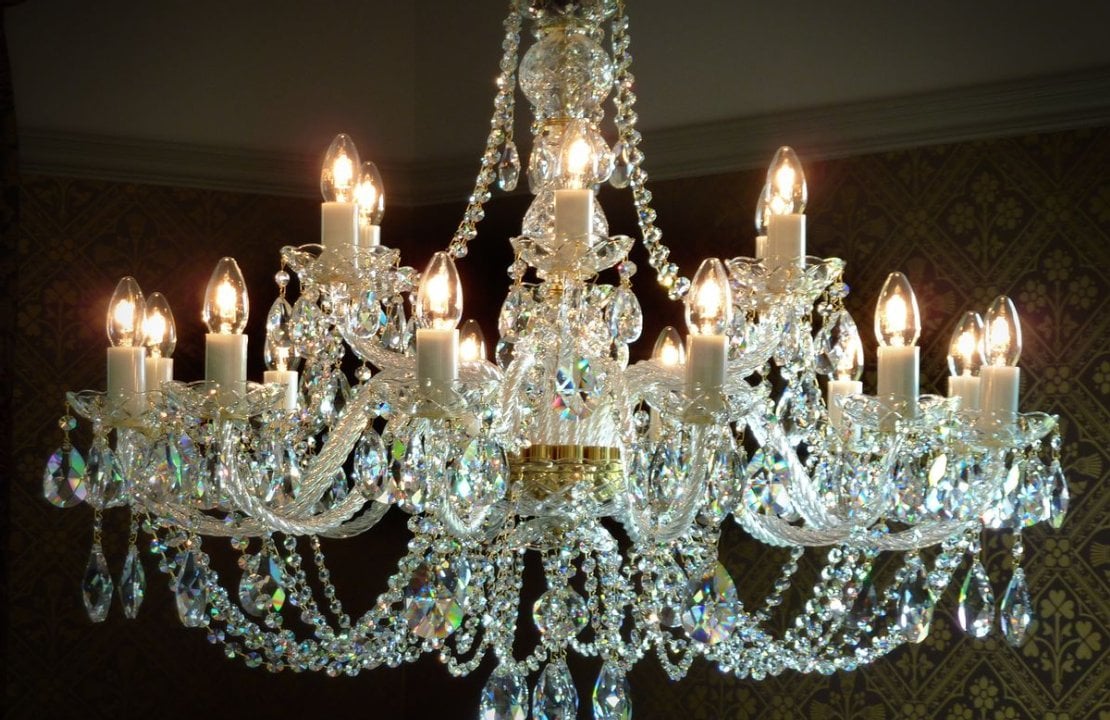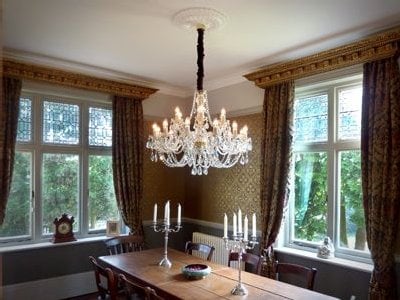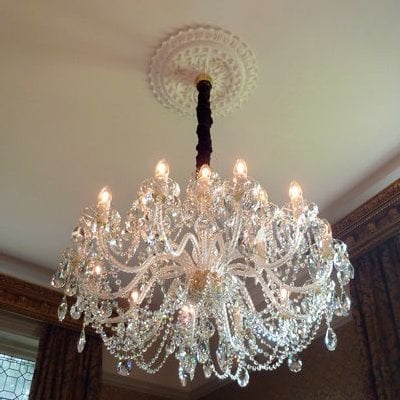What size chandelier is right for my room?
You need to follow some simple rules in order to pick the right size and style of chandelier for it’s required place.
The logic is simple – for a small room with a low ceiling, get a small chandelier that will comfortably sit high enough so that even your tallest visitor will not bang their head on it. As a rule of thumb, the chandelier should reach no lower than around 7ft high. The only exception to this rule is if your chandelier will sit over a dining room table in which case it can sit lower, but no lower than around 5ft. For a large room with a high ceiling, get a large chandelier that will make an impressive centrepiece to fill the large ceiling space.
Glass was chosen to be used in period interior lighting because it reflects and refracts light meaning that the amount of light is amplified. The first glass chandeliers are thought to have been manufactured in a glass factory in Bohemia in the 17th century hence why Bohemian crystal is thought to be the best quality chandelier. Waterford lead crystal is also extremely good quality.
What else do I need to be aware of?
It is extremely important that the fixings used for the chandelier are more than strong enough for the weight of the light. It would be disastrous for the light to fall on anybody passing underneath as it could easily result in a fatality. Safety chains can be used to provide a safeguard against fixings that fail - it is advised that the fixings can support much more than the weight of the chandelier. All electrical installations should be carried out by a suitably qualified electrician.
Most chandeliers are supplied in pieces that you have to fit together yourself so it is important to be patient, take your time and follow all instructions carefully in order to achieve the correct result. Give the chandelier a quick polish before you hang it. The chandelier should also be PAC tested by an electrician or suitably qualified person before installation.
Not all chandeliers are crystal – some are made from metal, wood and other materials with lampshades and these can be just as effective as crystal chandeliers and much easier to clean.
Chandeliers look great in kitchens if you are happy to clean them regularly – although they make a stunning centrepiece, they will need at least six monthly cleanings because of the build-up of grease. To clean a chandelier, you may need to dismantle it, clean all of the glass pieces with soapy water, rinse and dry carefully.
A brief word of warning - be wary of direct sunlight on crystal chandeliers which in extreme cases can magnify the sunlight and be a fire risk. Check your fuse box as you may be putting an extra strain on the existing lighting circuit when installing a large chandelier with lots of lamps.
Always use special chandelier bulbs and not compact fluorescent bulbs which can look ugly and would ruin a classic centrepiece. You can get low energy halogen candle bulbs which are dimmable.
The Victorian Emporium sells a great choice of chandeliers in crystal, metal and wood.




Be the first to add a comment...